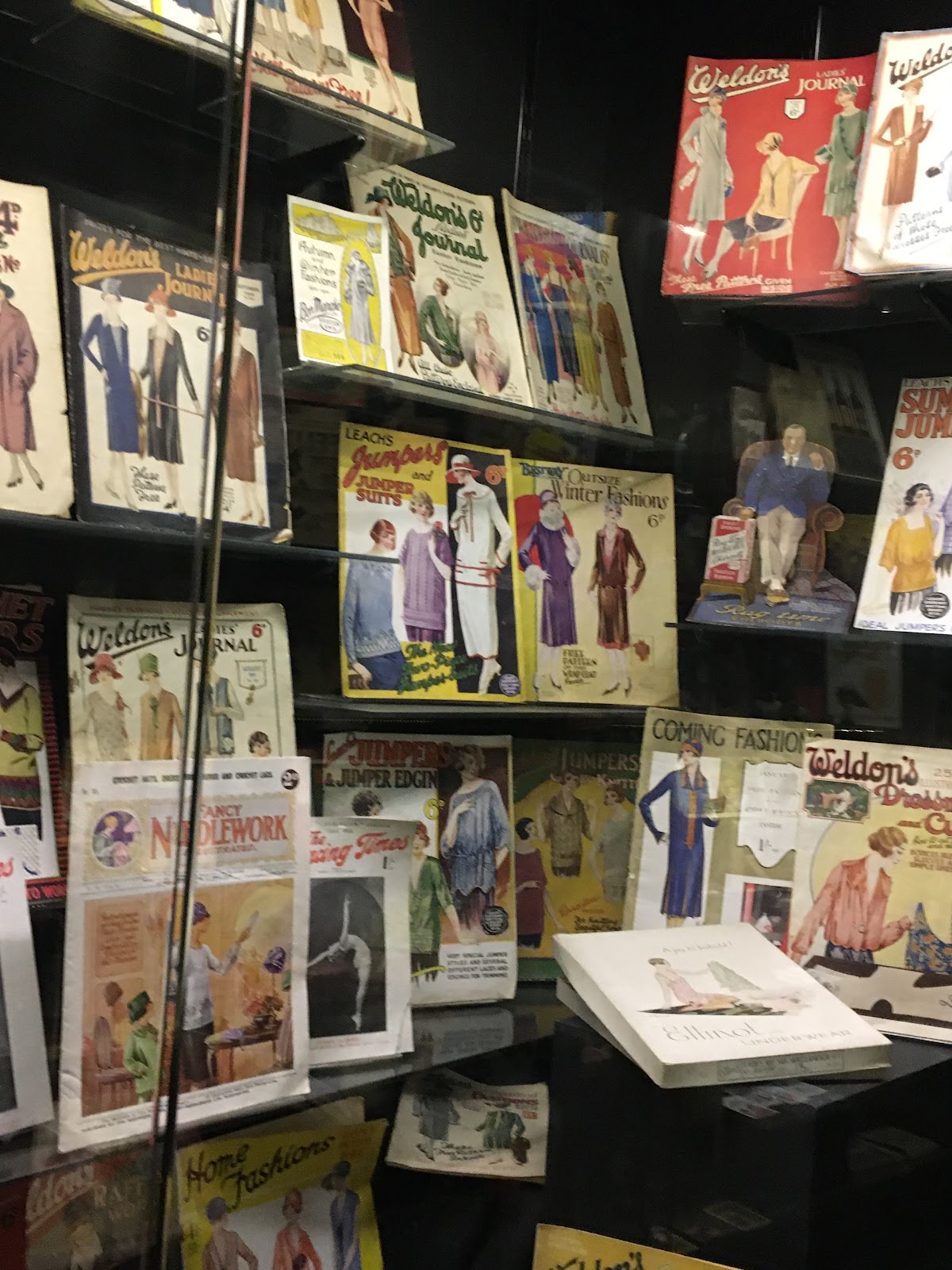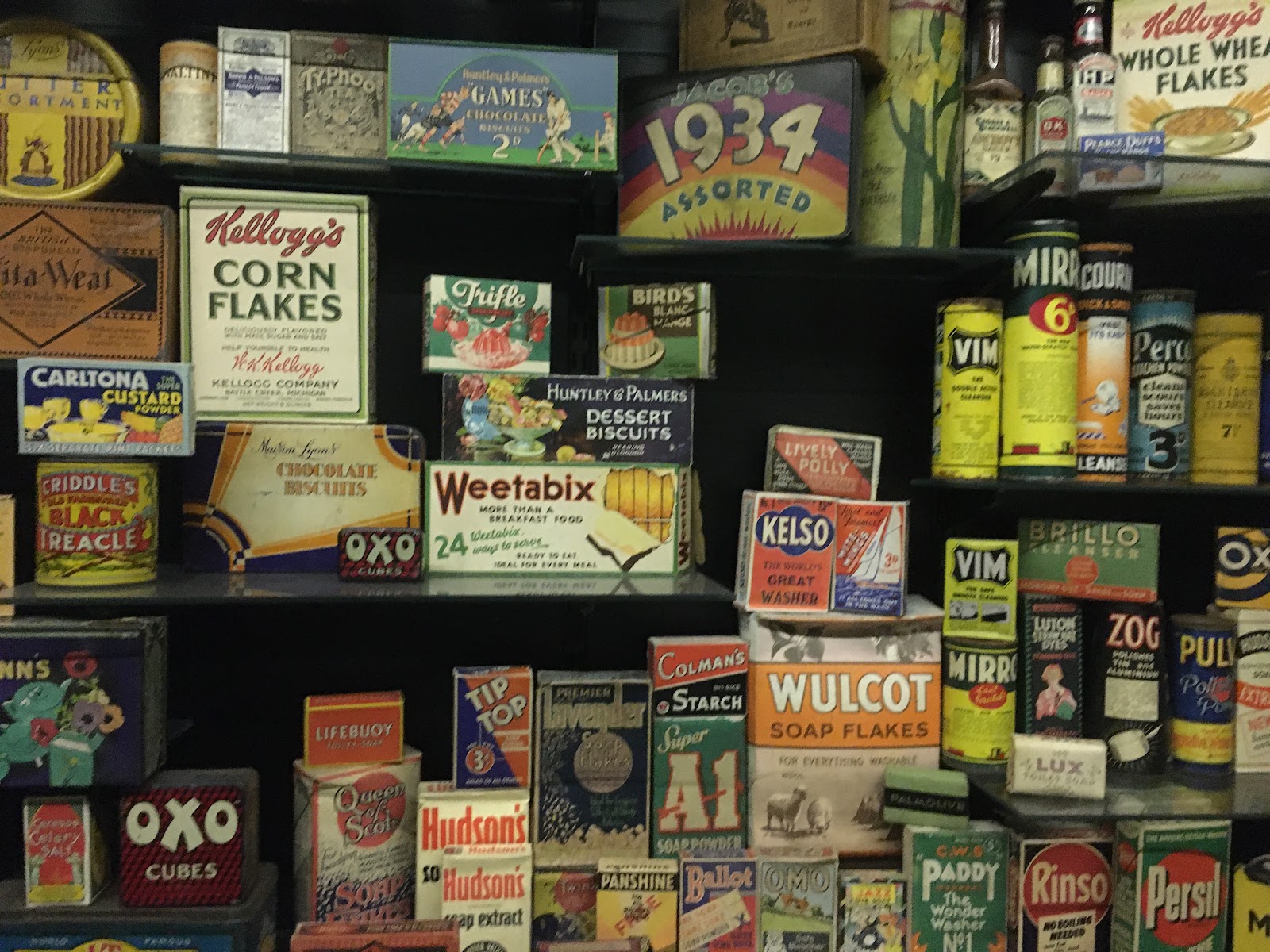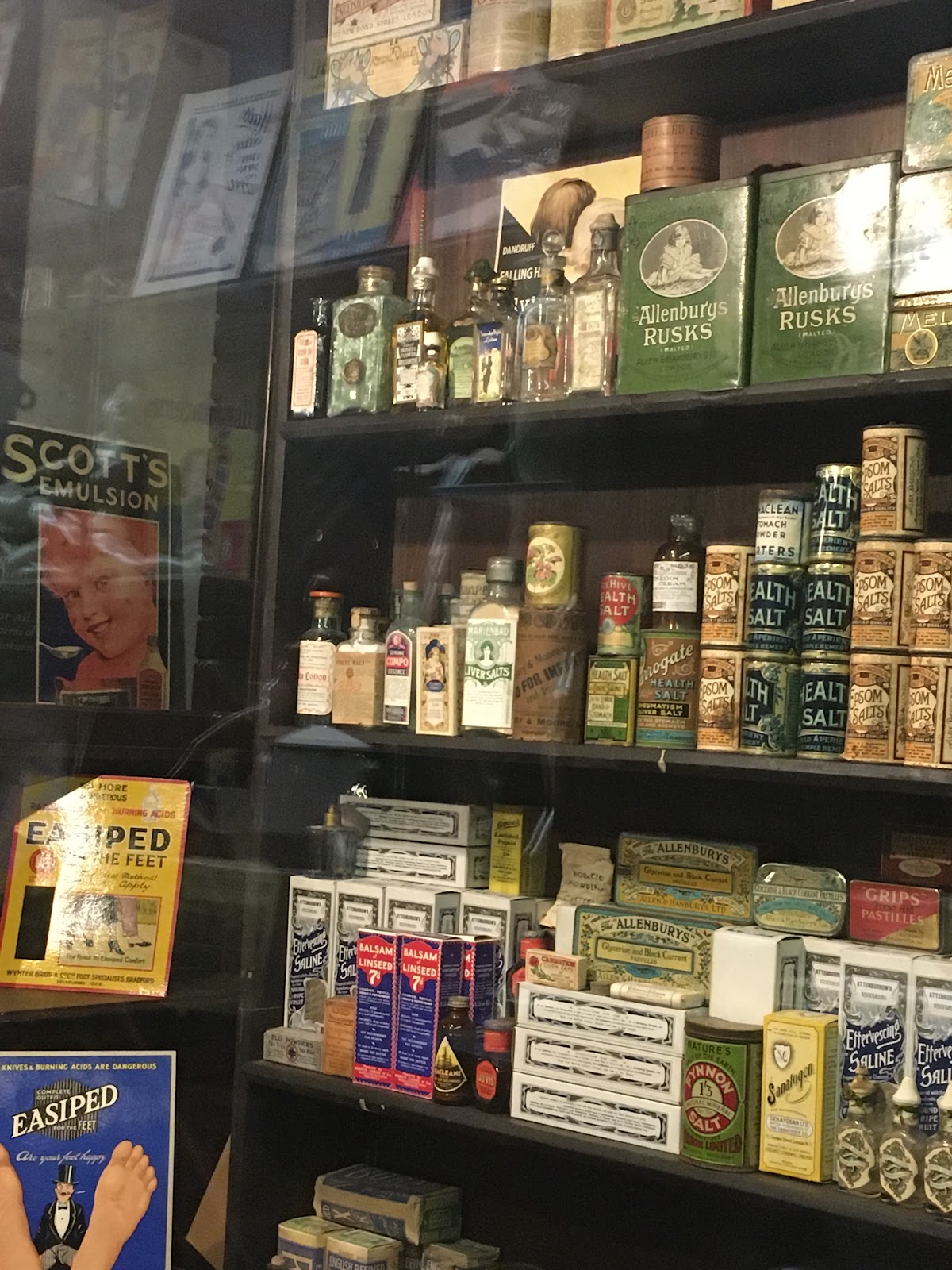But the books I have been writing and editing, though firmly grounded in political reality, have been essentially upbeat in their tone. Yes, there’s fascism, but also bias-cut frocks and black-and-white matinées. My three historical novels for children (Name upon Name, Star by Star and Hope against Hope, Little Island 2015-2020) dealt with Politics with a capital P, as they looked at various aspects of Irish history a century ago. In Mrs Hart’s Marriage Bureau (HarperCollins Ireland, 2 March 2023, and its unnamed-work-in-progress sequel) the focus is much more domestic.
And that’s what took me to the wonderful Museum of Brands in London a couple of weeks ago: an afternoon’s immersion in 200 years of packaging, with particular attention to the 1930s. The museum’s permanent display is based on the extensive Robert Opie collection.
I’ve always loved material culture. Even as a child, I loved reading as much about the minutiae of everyday objects as about huge historical events – more, probably. It’s one reason why I always loved Noel Streatfeild: her emphasis, in books like Ballet Shoes, on what they wore, and how much things cost, was endlessly fascinating to me.
Having said that, I’ve always been suspicious of what I call the product placement type of historical fiction – you know what I mean: too many brand names at the expense of a genuine feel for the period. If characters speak with 21st century accents and voice 21st century opinions, no amount of Wright’s Coal Tar soap is going to wash that out.
But there’s nothing like looking at the chocolate bars and shampoo bottles and dress patterns that your heroines would have been familiar with. Luckily the museum was quiet that afternoon because I kept exclaiming at things I recognised. Sometimes this was the visual memory of a childhood sweet, or a biscuit tin the same as the one Gran kept her buttons in. More often I was excited to see evidence of the brands and labels that I had mentioned in the text but wasn’t personally acquainted with. For example, my heroine April offers to wash some curtains in Reckitts Blue – a product I knew from my reading of 1930s fiction would bring them up nice and white, but which I’d never actually seen in the flesh until then. And there it was, reassuringly promising to do just that.
As always I was surprised at both the longevity of some of my favourite brands, and the disappearance of others. My 1930s characters could have joined me in a bar of Aero, but I can only imagine what grapefruit filled chocolate tastes like – and I don’t think I’d have given them a bar, because for the reader to start thinking, Gosh: grapefruit chocolate, how odd. I wonder what tastes like? might well have plucked their interest out of the story.
And maybe that’s key to using brands and products: of course it’s important to be accurate – my browser history is full of questions like When were tampons invented? and What breakfast cereals were popular in 1934? – but that needs to be balanced by not distracting the reader. After all, in a book set in 2023, I wouldn’t even mention brands unless perhaps as an economic signifier.
One of my favourite displays was the 1930s chemist’s shop. I could imagine my characters choosing a shampoo, or trying to find a patent recipe for period pains. And although they don’t make their own clothes, the range of 1930s dress patterns helped me to imagine their frocks and cardigans.
 |
| some frocks for Martha and April |
Mrs Hart’s Marriage Bureau will be published on 2 March. It’s my first novel for adults, and I absolutely loved writing it. I hope the little domestic details will charm the readers as much as they charmed the writer. And at the launch, I’ll be serving little boxes of traditional toffees. And yes, they did have Mackintosh’s in 1934.
(all photos taken at the Museum of Brands, 31 January 2023)






No comments:
Post a Comment
Note: only a member of this blog may post a comment.